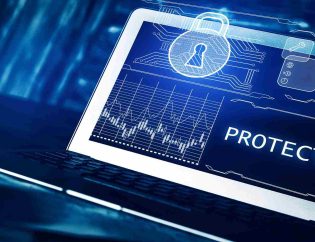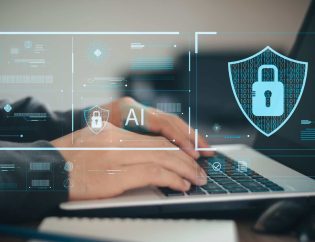
Table of Contents
Why Endpoint Security is Critical for Businesses
Endpoints are the gateways to your network. Every connected device increases the risk of a potential cyberattack. A strong secure endpoint strategy ensures your data remains safe, systems operate smoothly and employees can work without disruption.
Unsecured endpoints expose businesses to:
Malware Infections:
Unchecked devices can spread ransomware and viruses.
Unauthorized Access:
Compromised endpoints give attackers a foothold.
Operational Disruptions:
A single vulnerable device can halt business operations.
Implementing endpoint security is the first step to building an impenetrable defense for your network.
The Consequences of Endpoint Attacks
Endpoint attacks can cause long-term damage to businesses. Below are the primary consequences organizations face:
Data Loss:
Sensitive customer and financial data can be stolen, leading to regulatory fines.
Operational Downtime:
Endpoint breaches disrupt workflows, causing delays in productivity.
Financial Impact:
Recovering from cyberattacks involves high costs for remediation and system restoration.
Brand Reputation Damage:
Trust erosion among customers impacts future growth.
In 2022, 73% of organizations reported cyberattacks targeting endpoints, making a robust endpoint protection strategy essential.
Key Strategies to Secure Endpoint Devices
To protect your endpoints effectively, adopt these strategies:
1. Implement Zero Trust Architecture
Zero Trust validates every user and device before granting access. Multi-factor authentication (MFA) enhances security, ensuring no entity is trusted by default.
2. Leverage Advanced Endpoint Protection Tools
Endpoint detection and response (EDR) systems monitor endpoint activity in real time. AI-powered tools automate threat detection and responses, improving accuracy and speed.
3. Regular Patch Management
Patch management automates software updates to fix vulnerabilities. Scheduled audits ensure outdated systems are identified and updated, minimizing exploitable risks.
4. Encrypt Endpoint Data
Full-disk encryption secures stored endpoint data, preventing unauthorized access. Encryption protocols meet regulatory compliance, ensuring data confidentiality and integrity.
5. Automate Threat Monitoring and Response
Continuous monitoring tools track endpoint activities for suspicious behavior. Automating incident responses minimizes human error and ensures rapid remediation of detected threats.
Benefits of a Secure Endpoint Approach
By securing endpoints, organizations can:
Prevent Cyberattacks:
Stop ransomware, malware and phishing attempts at the source.
Enhance Business Continuity:
Avoid disruptions to critical workflows.
Protect Sensitive Data:
Ensure data privacy and comply with regulatory frameworks.
Save Costs:
Reduce financial losses from cyberattacks and data recovery.
Increase Employee Productivity:
Protect systems without interfering with daily tasks.
Endpoints secured with advanced tools provide a seamless user experience while maintaining the highest level of protection.
Essential Tools and Technologies for Endpoint Protection
Modern tools and technologies play a pivotal role in endpoint security. Below is a table highlighting the most critical tools:
| Tool/Technology | Description |
|---|---|
| Endpoint Detection & Response | Real-time monitoring and threat response for endpoints. |
| Zero Trust Solutions | Limits access to verified devices and users only. |
| Full-Disk Encryption | Protects data by encrypting entire endpoint drives. |
| Patch Management Software | Automates updates to close security loopholes. |
| AI-Powered Threat Detection | Identifies threats using machine learning algorithms. |
By adopting these tools, businesses can effectively secure endpoint devices and strengthen their cybersecurity posture.
Proactive Methods to Minimize Endpoint Risks
Reducing endpoint vulnerabilities requires ongoing effort. Follow these methods to strengthen your security posture:
Employee Training
Endpoint Security Policies
Regular Audits and Assessments
Adopt Network Segmentation
Implement Backup and Recovery Solutions
How Endpoint Security Aligns with Business Continuity
A secure endpoint approach aligns directly with business continuity strategies. By preventing cyberattacks, endpoint protection ensures that:
For example, during a ransomware attack, secured endpoints prevent system lockdown, minimizing downtime and ensuring productivity continues.
Endpoints are prime targets for cyberattacks. Protect your business with robust endpoint security strategies to prevent threats and ensure seamless operations. #CyberSecurity #SecureEndpoint
— Hyper Secure (@HyperSecure) December 17, 2024
Customer Testimonial
“Since implementing Hyper Secure’s endpoint protection tools, our systems have remained safe from threats. Business disruptions are a thing of the past!”
— Jane Doe, IT Director at TechSecure Inc.
FAQs
1. What is endpoint security?
Endpoint security protects devices like laptops, mobile phones and servers from cyber threats, ensuring data safety and operational continuity.
2. How does endpoint encryption work?
Endpoint encryption converts data into unreadable code, ensuring only authorized users can access it, even if devices are stolen or compromised.
3. What tools are essential for endpoint protection?
Essential tools include endpoint detection and response (EDR), full-disk encryption, patch management and AI-driven threat analysis systems.
4. How does zero trust improve endpoint security?
Zero trust ensures no device or user is trusted by default, requiring strict authentication and access controls to secure endpoints.
5. Why is patch management critical for endpoint protection?
Patch management fixes security vulnerabilities in software and operating systems, preventing attackers from exploiting outdated endpoints.
6. How does endpoint security align with business continuity?
Endpoint security prevents attacks that disrupt operations, ensuring systems remain functional and employees can work without interruptions.
Conclusion
Protecting endpoints from attackers is critical to ensure business operations remain secure and uninterrupted. By adopting zero trust frameworks, encryption and advanced endpoint protection tools, businesses can effectively secure endpoint devices while maintaining productivity.
At Hyper Secure, an Endpoint Security Company, we provide tailored solutions to safeguard your organization. Contact us today to secure endpoint devices and ensure uninterrupted business operations.








